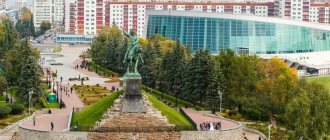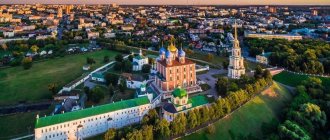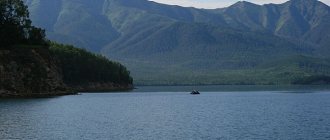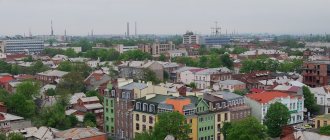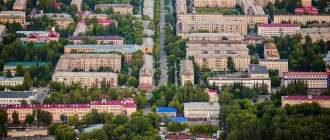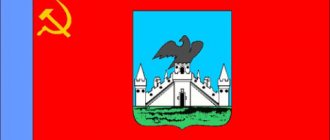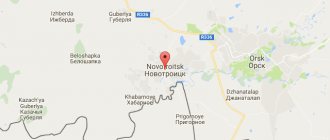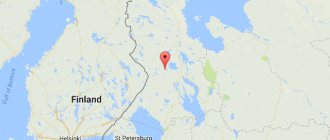Irkutsk is one of the largest cities in eastern Siberia, considered a science city and having an ancient and rich history. Until the October Revolution of 1917, it was a merchant village that lived and developed from trade with China. Irkutsk is included in the UNESCO World Heritage List as one of the most historically significant cities in Russia.
How the city of Irkutsk developed, what the population was in it and how it changed over the years and according to the gender and age factor - we will analyze in detail in the article, based on the data provided by Rosstat.
Current data
For 2022, the following current figures and facts can be cited for the city of Irkutsk:
- The toponym of the name arose along the Irkut River, into which the Angara flows - and at the confluence of which a settlement was built, which gradually grew into a large city with developed hydropower, aircraft manufacturing, food industry, and science.
- Founded in 1661. The original purpose was a prison. In the vast majority of cases, convicts and political prisoners were sent here.
- Today the population of the city of Irkutsk is 623,562 people, which makes it the 5th largest city in Siberia.
- Today, the point includes the following districts: Kirovsky, Oktyabrsky, Sverdlovsky, Kuibyshevsky Leninsky districts.
- It is part of the Irkutsk region, of which it is a separate administrative municipal entity and the capital.
- President of the Russian Federation V.V. In 2022, Putin signed a decree that awarded the title of “City of Labor Glory.”
- The city is divided into left-bank and right-bank parts by the Angara River, approximately 300 m wide.
- Irkutsk has a sharply continental climate, which gives a difference in temperature between the summer and winter seasons of 70°C.
Economy
Energy
The Irkutsk HPP with a capacity of 662.4 MW became the first cascade hydroelectric power station in the Irkutsk region. Construction of the dam began in 1950 and ended in 1958.
Industry
The largest industry in Irkutsk is Irkutsk, the Irkutsk Aviation Production Association, which was established in 1932 in the Trans-Baikal region of the Soviet Union. It is best known as the manufacturer of the Su-30 family of interceptor/attack aircraft. The Russian government merged Irkut with Ilyushin, Mikoyan, Sukhoi, Tupolev and Yakovlev into a new company called United Aircraft Corporation.
There is the Irkutsk aluminum smelter, which belongs to the Rusal company.
Transport
Irkutsk station
Tram in Irkutsk
Important roads and railways such as the Trans-Siberian Railway (federal highways M53 and M55) and the Trans-Siberian Railway connect Irkutsk to other regions of Russia and Mongolia. The city is also served by Irkutsk International Airport and the smaller Irkutsk North-West Airport.
The federal highway and railway to Moscow and Vladivostok pass along the other bank of the Angara from the center of Irkutsk.
Trams are one of the main types of public transport in Irkutsk. Other modes are trolleybus, bus, minibus (marshrutka) and cycling.
Statistics by year
If we talk about the population of the city of Irkutsk, here is how it has changed over the past 170 years:
- In 1856, when the first statistical census was carried out, confirming 24,100 people.
- By the post-revolutionary year of 1923 it had increased to 88,264.
- In 1831 there were 113,215.
- By 1839 it had more than doubled - to 250.181.
- In 1956 it was 314,000.
- In 1962 - 385,000 people.
- Already in 1975, 516,000 people began to live here.
- By 1985 – 601,000.
- By 1990 - 582,000.
- In 1995, the number of living citizens decreased even further, resulting in a figure of 581,000.
- But for the 2000 calendar period, the composition here reached 593,700.
- In 2005 – 582,500.
- In 2010 – 587.891.
- In 2015 – 620.099.
- For 2022 – 623.479.
Over more than 170 years of history, the population has increased more than 25 times. True, at the same time it is worth noting that over the past 5 years, until 2022, it has remained virtually unchanged in number and density. The figure fluctuates around 623,000, showing periodic growth and then a short fall, within a few 100 people.
Buryat peoples of the Irkutsk region
Buryats are the indigenous people of Siberia. Their appearance within the current Irkutsk region is noted as early as 2500 BC. Proof of this is the rock carvings and ancient sites of tribes of the Buryat peoples discovered by Baikal scientists.
At the beginning of the 17th century, when the active development of Siberia was taking place, there was contact between the Russians and the Buryat tribes. During the same period, Buryatia annexed to Russia.
At the beginning of the 20th century, martial law was legalized in the territory where the Buryat tribes lived, and lands and property were taken away from the indigenous residents. And only with the establishment of Soviet power were the Buryat peoples able to return to their former position.
About the city
If we talk directly about Irkutsk, today we can cite the following facts:
- The area is 277 sq. km.
- It is the largest formation in the region.
- The history begins with a fort, which was organized here from 1620 to 1650. Historians' versions differ somewhat on the exact date of its founding.
- Today, the city may be between 400 and 430 years old.
- In the immediate vicinity there is a reservoir and a local hydroelectric power station.
- The closest of the large settlements is Ulan-Ude, and of the million-plus cities - Krasnoyarsk.
- It is located on a flat area with slight hills, surrounded by forests of various types, as well as meadows and floodplains.
- On the territory and in the adjacent vicinity there are more than 40 parks, flower beds, groves, and protected arboretums.
- From an environmental point of view, the region is not favorable enough. Due to increased emissions from enterprises and industries of the electric power industry, the annual concentrations of formaldehyde, nitrogen oxides, benzopyrene and other harmful chemical compounds in the air are exceeded here.
- Another interesting fact is the specific drinking water. It comes here from a reservoir that is directly connected to Lake Baikal. However, since the water in it is close to distilled, that is, it has low mineralization rates, this negatively affects health. Regular use of it leads to the development of osteoporosis and other diseases. Today, there are several federal projects that are designed to bring mineralization standards to the required GOST levels. But, due to lack of funding, none of them has been implemented.
- Among the industries developed here are hydroelectric power stations, an aircraft plant, a heavy engineering industry, a relay plant, and the food industry.
- Transit tourism has been developed in Irkutsk, ensuring an influx of both Russians and guests from abroad to the territory of Lake Baikal.
- There are numerous vocational schools, technical schools, 6 universities and numerous branches here. Science is developed, which is represented by research institutes, departments of the academy, the Russian Geographical Society, scientific centers of the Russian Academy of Medical Sciences and other organizations.
Kinds of sports
Trud Stadium will be replaced with an indoor arena for bandy and speed skating.
Bandy is popular in the city. There are several clubs, most notably Baikal-Energia of the Russian Ball Super League, which can attract 30,000 spectators. It is also the center of women's bandy in Russia, with the Record club providing the majority of the national team's players. In the 2019 national championship, four teams were from Irkutsk and only two from the rest of the country.
There are 384 sports facilities in Irkutsk, of which 200 are municipal. Among them are 23 swimming pools, 14 ski lodges, a sports palace, 154 courts, 165 gyms, an athletics arena, a running track, 7 stadiums - Trud, Record, Dynamo, Zenit, Aviator, Lokomotiv-2, Irktusk sports complex. and the main football arena – “Lokomotiv” with 3 thousand seats.
The 2012 Women's Bandy World Championship was held in Irkutsk and was praised by the International Bandy Federation. The city hosted the 2014 Bandy World Championship. The 2016 Russian Bandy Super League final was held at the Record Stadium. The 2022 Bandy World Championship was also to be hosted in Irkutsk. However, the decision was revised. It was then believed that Irkutsk could win the right to host the 2020 tournament if the FIB gave assurances that the planned indoor arena would be ready for use on time. It will also be an indoor arena for speed skaters. Its construction began in October 2022 and is expected to be ready for use by March 2022, in time for the IIHF World Championships.
Ethnic composition
The total population of the city of Irkutsk is represented not only by Russians, but also by other nationalities, which form the total population for 2010. This includes:
- Russians – more than 501,000.
- The second largest population are the Buryats - more than 12,000.
- Ukrainians and Tatars are present here in approximately the same percentage – about 5,000.
- The Azerbaijani, Kyrgyz, and Armenian diasporas are represented by residents - just over 2,000.
- The least numerous are Uzbeks, Tajiks, Belarusians, Tuvans and Jews. There are a little more than 1 thousand of them.
Ecology of Irkutsk
The main pollutants of urban air are motor transport and heat power. Moreover, the role of the first is especially great, and industrial facilities make a minor contribution. In 2010, the norms for benzopyrene were exceeded by 10 times, and for formaldehyde – by 6 times. Both substances are possible carcinogens. For other pollutants, the excesses are not so significant. An increase in the number of cars also contributes to an increase in pollution. Stagnation and settling of air in an anticyclone obviously leads to an increase in the concentration of harmful substances in the surface layer of air.
Gender and age
As for age indicators, here is how many residents live in the city of Irkutsk according to these parameters:
- From 0 to 4 years – 44.766.
- From 5 to 9 years – 43.462.
- From 10 to 14 – 34.321.
- From 15 to 19 – 30.964.
- From 20 to 24 – 31.726.
- From 25 to 29 – 59.134.
- From 30 to 34 – 67.122.
- From 35 to 39 – 53.605.
- From 40 to 44 – 44.026.
- From 45 to 49 – 38.998.
- From 50 to 54 – 30.612.
- From 55 to 59 – 33.254.
- From 60 to 64 – 32.198.
- From 65 to 69 – 29.070.
- From 70 to 74 – 20.512.
- From 75 to 79 – 10.894.
- From 80 to 84 – 12.453.
- From 85 to 89 – 4.316.
- From 90 to 94 – 1.765.
- From 95 to 99 – 303.
- More than 100 years – 61.
As for gender distribution, here are the statistics in the city of Irkutsk in this regard:
- Men of all ages live here in 2022 - 277,683.
- Women, regardless of age – 345,879.
Information of the Irkutsk region
Policy
Building of the Government of the Irkutsk Region
During the Soviet period, high authority in the region was divided between three persons: the first secretary of the Irkutsk CPSU Committee (who actually had the greatest powers), the chairman of the regional council (legislative power) and the chairman of the regional council. regional executive committee (executive branch). Since 1991, the CPSU lost all power and the head of the regional administration, and eventually the governor was appointed/elected along with the elected regional parliament.
The Charter of the Irkutsk Region is the basic law of the region. The Legislative Assembly of the Irkutsk Region is the province's standing legislative (representative) body. The Legislative Assembly exercises its powers by adopting laws, regulations and other legal acts, as well as monitoring the implementation and compliance with the laws and other legal acts adopted by it. The highest executive body is the Regional Government, which includes territorial executive bodies such as district administrations, committees and commissions that promote development and manage the day-to-day affairs of the region. The regional administration supports the activities of the Governor, who is the highest official and acts as a guarantor of compliance with the regional charter in accordance with the Constitution of Russia.
Migration
If we talk about resettlement, the following figures are given for 2022:
- The number of arrivals is about 43,000.
- The number of those who left is 46,000.
Migration of the Irkutsk region
Thus, it is necessary to take into account that despite a fairly developed infrastructure and functioning industrial enterprises, numerous universities, cultural and other entertainment institutions, some of the townspeople are trying to move. Moreover, some move within the country, while others move to other states.
Living conditions
In the economic sphere, the Irkutsk region is the most developed territory of Eastern Siberia. But if we compare it with the Black Earth Region, then the regions of Irkutsk lag behind. The situation for Siberians is saved by the fact that they are charged less for electricity than in other Russian cities and villages.
If we consider in general, the standard of living of the population here is slightly lower than in the central regions of the country. With a deviation to the east, there is a significant increase in prices for various categories of goods, but wages increase insignificantly. According to the survey, the average Irkutsk family spends most of its expenses on food products and utilities; less money is spent on other expenses.
As for ecology, the situation in the Siberian region remains complex and very unfavorable. The situation is complicated by large emissions of destructive elements into the air layers from chemical, aluminum, pulp and other plants. In addition, the environmental situation is affected by frequent forest fires and the destruction of large areas of forests.
In general, the life of residents of the Irkutsk region is not very different from the life of residents of the central part of Russia. Even ethnic diversity does not affect the culture and life of true Siberians.
Recommendations
Sources
- Legislative Assembly of the Irkutsk Region. Resolution No. 9 / 5-ЗС dated April 15, 2009 “Charter of the Irkutsk Region”, as amended. Law No. 2-U of December 14, 2022 “On amendments to the Charter of the Irkutsk Region.” Came into force ten days after official publication. Published: “Regional”, No. 45, April 24, 2009 (Legislative Assembly of the Irkutsk Region. Resolution No. 9/5-ZS of April 15, 2009. Charter of the Irkutsk Region
as amended by Law No. 2-U of December 14, 2022 "
On introducing amendments to the Charter of the Irkutsk Region
on the day following the ten-day period after the day of official publication.). - Legislative Assembly of the Irkutsk Region. Law No. 49-OZ of June 21, 2010 “On the administrative-territorial structure of the Irkutsk region,” as amended. Law No. 12-OZ of March 23, 2022 “On Amendments to Articles 25 and 33 of the Law of the Irkutsk Region” On the Administrative-Territorial Structure of the Irkutsk Region “and the Law of the Irkutsk Region” On Amendments to a Geographical Object and (or) on the Renaming of Geographical Objects "". Came into force after the official date of publication. Published: “Regional”, No. 71, June 25, 2010 (Legislative Assembly of the Irkutsk Region. Law of June 21, 2010 No. 49-OZ “ On the administrative-territorial structure of the Irkutsk Region”
as amended by the Law of March 23, 2022 No. 12-OZ “
On Amendments to Articles 25 and 33 of the Law”).
Irkutsk region “On the administrative-territorial structure of the Irkutsk region” and the Law of the Irkutsk region “On the procedure for considering the assignment of names to geographical objects and (or) renaming of geographical objects” . Valid from the date of official publication.). - Legislative Assembly of the Irkutsk Region. Law No. 88-oz of December 16, 2004 “On the status and boundaries of the municipal formation” of the city of Irkutsk, “Irkutsk region”. Came into force on December 31, 2004, but not earlier than 10 days from the date of official publication. Published: “East Siberian Truth”, No. 254–255, December 20, 2004 (Legislative Assembly of the Irkutsk Region. Law No. 88-oz of December 16, 2004 “ On the status and boundaries of the municipal formation “Irkutsk City” of the Irkutsk Region
. Came into force on December 31, 2004, but not earlier than 10 days after the official date of publication). - Legislative Assembly of the Irkutsk Region. Law No. 94-oz of December 16, 2004 “On the status and boundaries of municipalities of the Irkutsk district of the Irkutsk region,” as amended. Law No. 106-OZ of November 6, 2012 “On amendments to the Law of the Irkutsk Region” “On the status and boundaries of municipalities of the Irkutsk district of the Irkutsk region.” Came into force on December 31, 2004, but not earlier than 10 days from the date of official publication. Published: “East Siberian Truth”, No. 254–255, December 20, 2004 (Legislative Assembly of the Irkutsk Region. Law No. 94-oz of December 16, 2004 “ On the status and boundaries of municipalities of the Irkutsk district of the Irkutsk region”,
as amended , introduced by the Law of November 6, 2012 No. 106-OZ "
On Amendments to the Law of the Irkutsk Region "On the Status and Boundaries of Municipal Entities of the Irkutsk District of the Irkutsk Region"
. Valid from December 31, 2004, but not earlier than 10 days after date of official publication). - Brumfield, William. Irkutsk: Architectural heritage in photographs
// M.: Three Squares Publishing House, 2006. ISBN 978-5-94607-061-4 - Polunina N.M., Korobov S.A., Sutton Yu.M., Korobova G.V. Her Majesty – Queen of Siberia // Korobov Publishing House. – Irkutsk, 2008.
Attractions
Photo source - top7travel.ru
The Irkutsk region is famous for its rich history. In terms of the number of museums, and there are more than 60 in the region, it is in the top three, along with the Krasnoyarsk Territory and the Omsk Region. Unique natural and historical sites are scattered throughout the territory, and there are health and ski resorts.
Cultural life is represented by the work of many theater, dance and pop groups. Numerous festivals and competitions are held throughout the region at different times of the year.
The central attraction of the entire region is Lake Baikal
.
The deepest and purest in the world, it is fed by 336 sources and releases only one river - the Angara. The northwestern part of the coast is occupied by the Baikal-Lena Nature Reserve
, with powerful gorges, traces of ancient volcanoes, diverse flora and fauna, many of which are listed in the Red Book.
Photo source - pbs.twimg.com
Most of the western part of the Baikal coast and Olkhon Island is occupied by the Pribaikalsky National Park
. The place is famous not only for its natural beauty, but also for fragments of the cultural and historical heritage of the region. The ruins of stone walls, ancient settlements, rocks with rock paintings of ancient settlements and other archaeological sites have been preserved here. The most interesting tours can be found here.
Not far from Lake Baikal there are several more interesting recreational facilities - Sandy Bay with a wonderful climate and breathtaking scenery, Sable Lakes surrounded by mountains, Shaman Stone. Here, nearby, high-speed mountaineering begins in the mountains of Khamar-Daban and Eastern Sayan, to a peak 2090 meters high. For those who like to conquer peaks, you can choose mountain climbing tours to suit every taste.
Photo source - chitatravel.ru
In addition to cold bodies of water, there are also warm ones in the Irkutsk region. They are located in the south, on the border with Buryatia, and that’s why they are called Warm Lakes
.
The water in them warms up to +28 ˚C in the summer. Very close there is the snowy Irkutsk resort - the most famous ski resort in the region - “ Mount Sobolinaya
The center of cultural and architectural attractions is located in the capital of the Irkutsk region - Irkutsk
. Interesting is the 130th quarter with colorful wooden houses built in the 18th century, Irkutsk Akademgorodok with the main research institutes of the region. A walk along the Lower Angara embankment will be remembered for its impressive views of many monuments. Among the religious buildings, the most impressive are the Spasskaya Church, built in the Siberian style, and the Znamensky Cathedral, a striking representative of the Baroque.
Photo source - theplacement.ru
In terms of concentration of cultural sites, the Irkutsk region occupies an honorable place among other Russian cities. Among the museums of the Irkutsk region
The most interesting are: the regional art museum, the Museum of the Decembrists, where the Volkonskys and Trubetskoys once lived. At a distance of 50 kilometers from Irkutsk there is an open-air architectural and ethnographic museum “Taltsy”, with monuments of wooden architecture of the 17th–19th centuries.
The region is also unique in the ethnographic aspect, because on the map of the Irkutsk region there are settlements of unique nationalities - Golendras and Tofalars. The first are descendants of Germans who immigrated to Siberia during the era of Stolypin’s reforms, and the second, numbering only 700 people, consider themselves indigenous inhabitants of the Eastern Sayan mountains. This and the completely wild, picturesque nature attracts many tourists to the Tofalaria
.
Photo source - mtdata.ru
If you want even more attractions, read the article “Top 5 Unique Places in the Irkutsk Region.”
Attractions
- New Kazan Cathedral
- House-museum of the Decembrists in the Volkonsky estate
- Znamensky Monastery
- Art Museum named after. V. P. Sukacheva
- Museum of Local Lore
- Botanical Garden of ISU
- Mineralogical Museum named after. A. V. Sidorova
- Several archaeological sites dating back over 30 thousand years, including the first Paleolithic site discovered on Russian territory.
- Icebreaker-museum "Angara"
- Monument to Alexander III on the Angara embankment
- The White House is the residence of many Irkutsk governors-general.
- "Experimentarium" is a museum of entertaining science.
- Kaya relic grove
- Irkutsk Red Barracks
- Memorial complex "Irkutsk residents during the Second World War 1941-1945"
- Toy railway
- Monument to Marshal Zhukov
- Monument to Alexander Vampilov
- Monuments to Lenin
On November 4, 2004, the first monument in Russia to Admiral Alexander Kolchak, who was arrested and executed in this city, was unveiled in Irkutsk. The event was timed to coincide with the 130th anniversary of the admiral’s birth. The monument is located at the site of Kolchak’s execution, near the Znamensky Monastery, on the banks of the Angara.
Brief history of the region
Photo source - smolbattle.ru
The territory of the Irkutsk region began to be settled in the Paleolithic era. Later documents indicate the appearance of the Buryat and Tungus tribes in the Angara region at the end of the 12th century. With the arrival of the Russians, their population on the banks of the Angara was numerous. Settlement by Siberian settlers began only in the 17th century, with the formation of the first fort called Rybinsky. Behind it, Kirensky, Balagansky and Irkutsky were rebuilt.
The latter, with the further development of fishing, livestock and economic activities, gradually gained central importance in Eastern Siberia. The creation of industrial foundations, mining and cultural development of the region had a significant impact
The Irkutsk province appeared, occupying important religious, commercial and foreign economic significance
At the beginning of the 19th century, Irkutsk already ranked second in Siberia in terms of population, and continued to expand its borders and establish trade and economic ties with the East. The development of the region was subsequently influenced by the Japanese War, the February Revolution, the Civil War and the Great Patriotic War. The participation of the Irkutsk region in the Second World War as a subject supplying the front with combat elements, equipment and food products brought the region significant growth in the industrial and mining areas. The construction of the Baikal-Amur Mainline influenced the economic development of the vast territory of Siberia and the Far East.
Photo source - regnum.ru
The results of perestroika in the 1980s were changes in political, economic, demographic and cultural life throughout the country. With the collapse of the USSR and the formation of the Russian Federation, the region continued its development. The political structure was updated, bridges and factories were built, monuments were opened in honor of past events.
The most important event in recent history was the holding of the Baikal Economic Forum on an ongoing basis, once every 2 years, and after 2010 - annually. It discusses the most important issues for improving the region, including the creation of a tourist and recreational economic zone on Lake Baikal.
In general, the development of tourism in Irkutsk and the Irkutsk region has been experiencing steady growth for several years: infrastructure is improving, the quality of service is improving, new tourist destinations for adults and children are being developed, and new routes are being developed.
Additional information about life in the region, tourism in Irkutsk and current news can be found on the official website of the Irkutsk region: irkobl.ru
Administrative division
Story
The February Revolution of 1917 marked the beginning of administrative and territorial transformations in Russia. The previously existing Irkutsk Governor-General, which included the Irkutsk and Yenisei provinces, Transbaikal and Yakutsk regions, ceased to exist and the administrative units became independent.
On May 25, 1925, by decree of the All-Russian Central Executive Committee, the Siberian Territory was formed. Irkutsk province became part of it. Based on the Resolution of the All-Russian Central Executive Committee on June 28, 1926, the Irkutsk province was abolished, and 3 districts were created on its territory - Irkutsk, Tulunsky, Kirensky. On July 23, 1930, by a resolution of the Central Executive Committee and the Council of People's Commissars of the USSR, the district division was eliminated and the Siberian Territory was divided into two parts - West Siberian and East Siberian. The East Siberian Territory included four districts - Irkutsk, Kirensky, Kansky and Krasnoyarsk (former districts of the Siberian Territory), Chita and Sretensky (former districts of the Far Eastern Territory) and the Buryat-Mongolian Autonomous Soviet Socialist Republic. Irkutsk became the administrative center of the new East Siberian Territory. This huge territory in those years consisted of 68 districts, 4 national districts (Vitimo-Olekminsky, Taimyrsky, Evenkiysky and Tofalarsky), 2 national districts, 16 aimags of Buryat-Mongolia.
In 1934, the Krasnoyarsk Territory with its center in Krasnoyarsk was separated from the East Siberian Territory. In April 1935, the Evenki and Taimyr national districts became part of the Krasnoyarsk Territory. In 1936, with the adoption of the new Constitution of the USSR, the Buryat-Mongolian ASSR left the East Siberian Territory, and the region became a region. And finally, on September 26, 1937, by a resolution of the Central Executive Committee of the USSR, the East Siberian region was divided into the Irkutsk and Chita regions. At the same time, the Ust-Orda Buryat-Mongolian National District was formed with the administrative center in the village of Ust-Orda.
The external borders of the Irkutsk region, determined when it was created in 1937, almost coincide with the borders of the former Irkutsk province (part of the territory became part of Buryatia) and, with minor changes in the northeast, have survived to this day. However, the internal division changed several times. Intraregional administrative-territorial transformations concerned territories of active economic development: this is how the Ust-Ilimsk and Chunsky districts arose; changed the borders of the Taishet, Bratsk, Nizhneilimsk, Ust-Udinsk and Tulun districts; Tofalarsky (part of Nizhneudinsky), Tanguysky (divided between Bratsk and Tulunsky) and Shitkinsky (divided between Taishetsky and Chunsky) districts were abolished.
On January 1, 2008, the Ust-Orda Buryat Okrug became part of the Irkutsk region.
Merger of the Irkutsk region and the Ust-Orda Buryat Autonomous Okrug
On October 11, 2005, an agreement on the unification of territories was signed between the authorities of the Irkutsk region and the Ust-Ordynsky Buryat Autonomous Okrug in the village of Ust-Ordynsky.
The new subject of the Russian Federation is called “Irkutsk Region” and is the legal successor of both subjects. The Ust-Ordynsky Buryat Autonomous Okrug is part of it with a special administrative status and is called the Ust-Ordynsky Buryat Okrug.
On October 11, 2005, the parliaments of the Irkutsk region and the Ust-Orda Buryat Autonomous Okrug adopted an appeal to the President of the Russian Federation “On the formation of a new subject of the Federation.” On April 16, 2006, a referendum was held on the unification of the Irkutsk region and the Ust-Orda Buryat Autonomous Okrug, as a result of which on January 1, 2008 the Ust-Orda Buryat Autonomous Okrug became part of the Irkutsk region.
Current state
The modern system of administrative-territorial structure of the Irkutsk region includes 474 municipalities, of which:
- municipal districts - 33,
- urban districts - 9,
- urban settlements - 67,
- rural settlements - 365.
Number of administrative-territorial units:
- cities of regional subordination - 14,
- cities of district subordination - 8,
- urban-type settlements - 54,
- rural settlements - 1488.
Read on Irkipedia:
Cape Burkhan
Photo source - fotokto.ru
The cape, better known as Shaman Rock, is located in the central waters of Lake Baikal, near the village of Khuzhir. This is one of the most recognizable places from the lake; not a single tourist leaves the lake without a photo.
The double-peaked rock is distinguished by the bright red lichen at the top, and the mountain is limestone with small inclusions of quartz and marble. The rock is pierced by a through cave more than 10 meters long, where in the past the Buryats performed shamanic rituals. With the advent of Tibetan Buddhism, the indigenous population began to call the main deity of the lake with the word “Burkhan”, and the rock as his home.
Cape Burkhan with the cave is considered one of the main 9 Asian shrines, revered by all religions. The site is known for many archaeological finds from the Neolithic era to modern times. Some of the hundreds of unique artifacts are kept in the Khuzhir Museum.
Kodar Ridge
Photo source - sentstory.ru
It is located in the Transbaikalia region and belongs to the Stanovoy Highland system. Its peaks rise above the Chara Basin, and the ridge itself is 250 kilometers long. More peaks are around 3,000 meters high, but the highest peak, called BAM, rises to 3,072 meters.
The ridge is created by crystalline schists and granite gneisses; deposits of copper and coal have been found here. The Kodar ridge belongs to the area of modern mountain building, so earthquakes are frequent here. The modern alpine landscape was formed under the influence of erosion, glaciation and tectonic activity.
A well-known, but not fully studied local phenomenon is glaciers that formed below the natural line of occurrence of snow and ice massifs. Moreover, their area is amazing - 12.3 km2.
Going out to explore the mountains of the Irkutsk region alone is not always a great option. Without knowing the area, you can waste precious vacation time looking for the most interesting and unique objects. The “Seven Days on Baikal” excursion is a real find for those who dream of exploring the lake and its islands and learning many legends, secrets, and walking along unknown paths. Just a week and a concentration of vivid impressions is guaranteed. One of several tourist centers on Olkhon with a picturesque view of the Baikal nature is perfect for accommodation. Moreover, when ordering an excursion tour or accommodation, you can get your money back for your vacation as part of the “20% Cashback for Traveling in Russia” promotion.
